At Expo 2025 in Osaka, Uzbekistan invites the world into a living symbol of transformation. The “Garden of Knowledge” pavilion, designed by Stuttgart-based ATELIER BRÜCKNER and commissioned by the Art and Culture Development Foundation of Uzbekistan (ACDF), opened its doors to the public with a bold vision: to serve as a laboratory for a future society rooted in tradition yet driven by innovation.
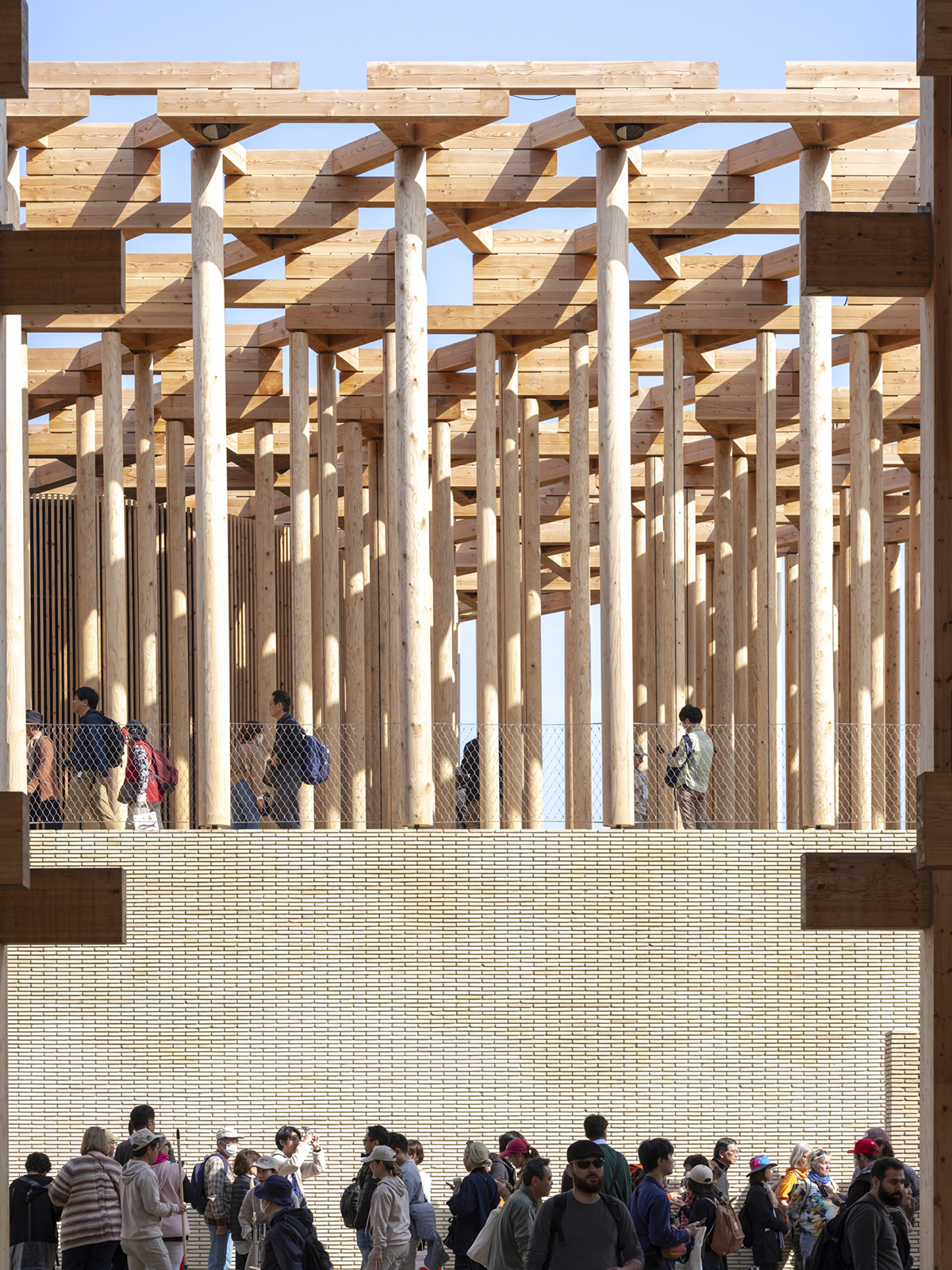
With a footprint of 1,272 square meters, the pavilion is both architecture and metaphor. It speaks of fertile ground, culturally, environmentally, and intellectually, on which the future of Uzbekistan is growing. Its two-story design embraces natural materials like wood, clay, brick, and gravel, sourced from both Uzbekistan and the surrounding region in Japan.
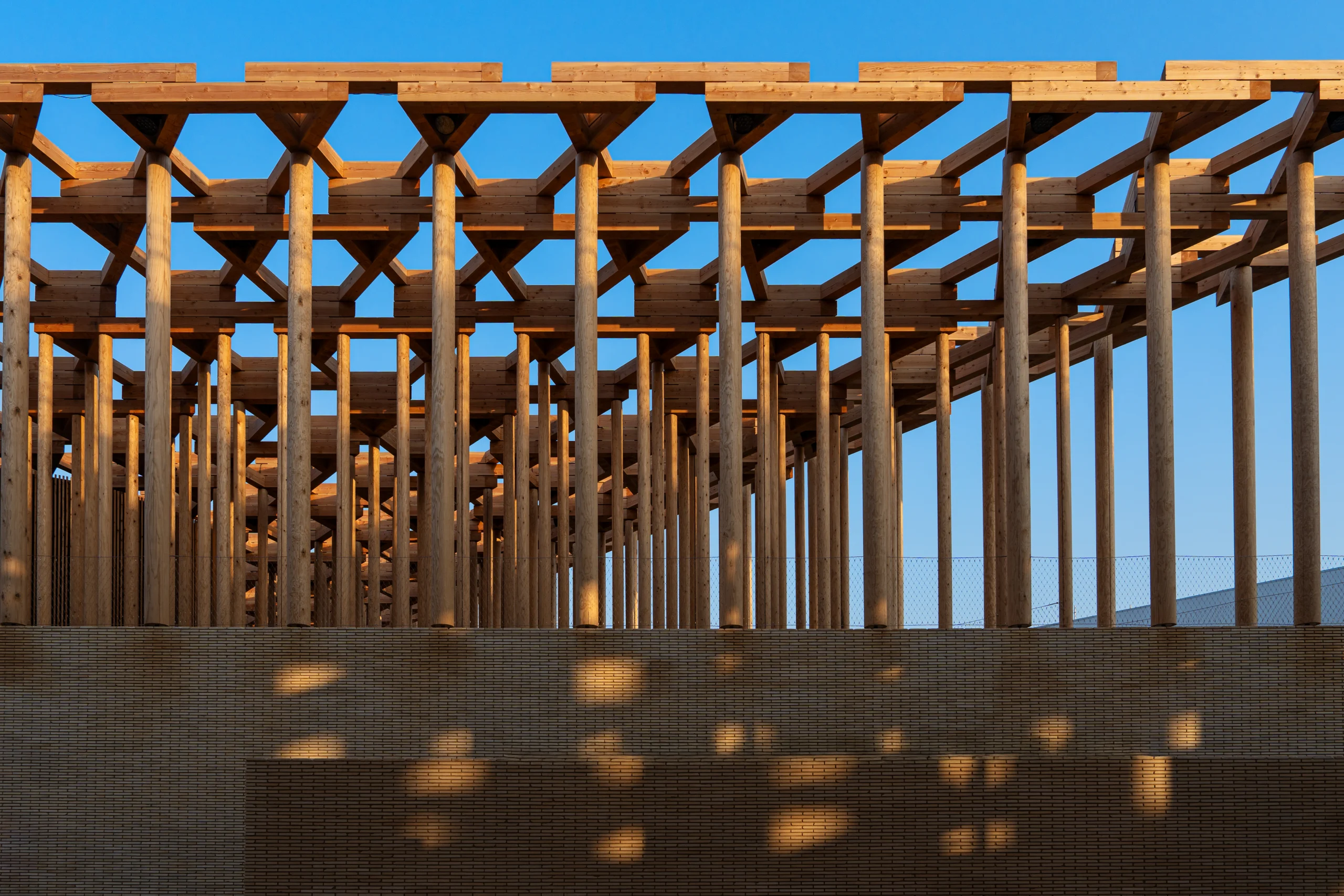
Every element, from the brick foundation to the soaring wooden terrace, pays homage to the country’s craftsmanship and environmental heritage, while also presenting a vision of circular design. After Expo, the structure can be dismantled and fully reintegrated into natural or technical cycles, setting an example of truly sustainable architecture.
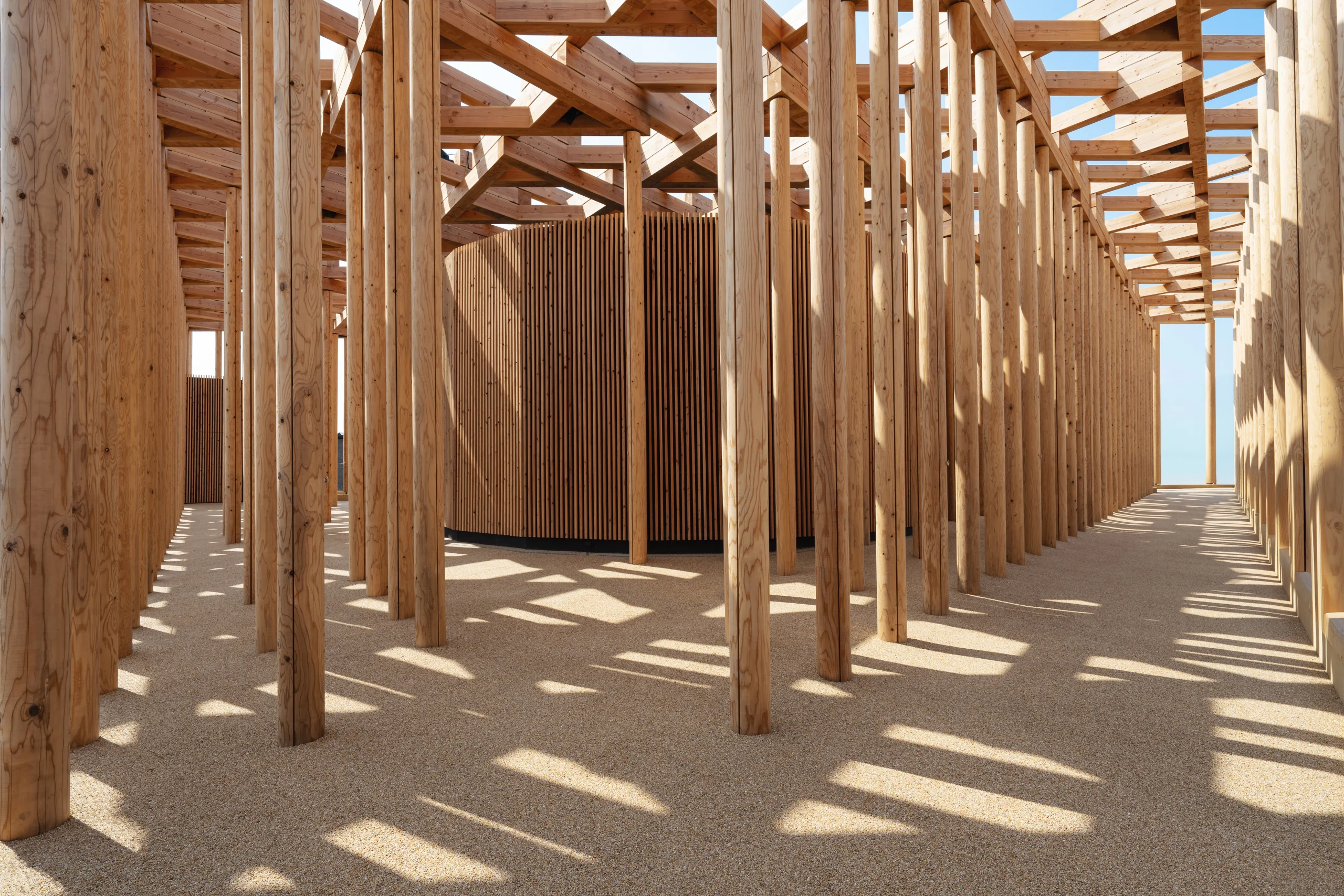
The open-air terrace, an 8-meter-high sculptural forest of wooden columns, evokes the feeling of stepping into a traditional Uzbek palace or temple. This canopy, constructed entirely from locally sourced sugi (Japanese cypress), is not just a design gesture but a space of exchange, meant to encourage dialogue and connection. Visitors can scan the timber to trace its origin, grounding this architecture of ideas in the specifics of place and material.
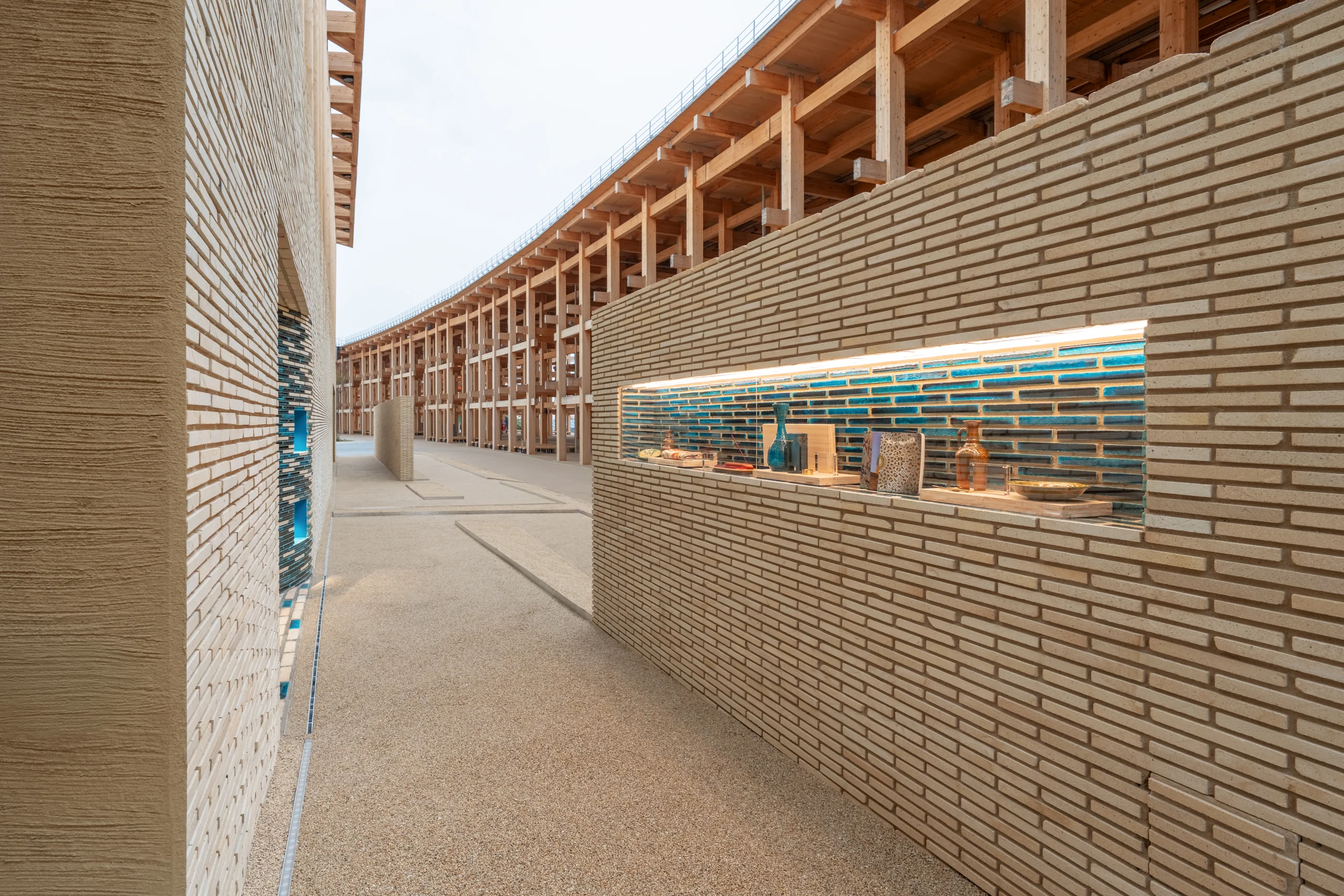
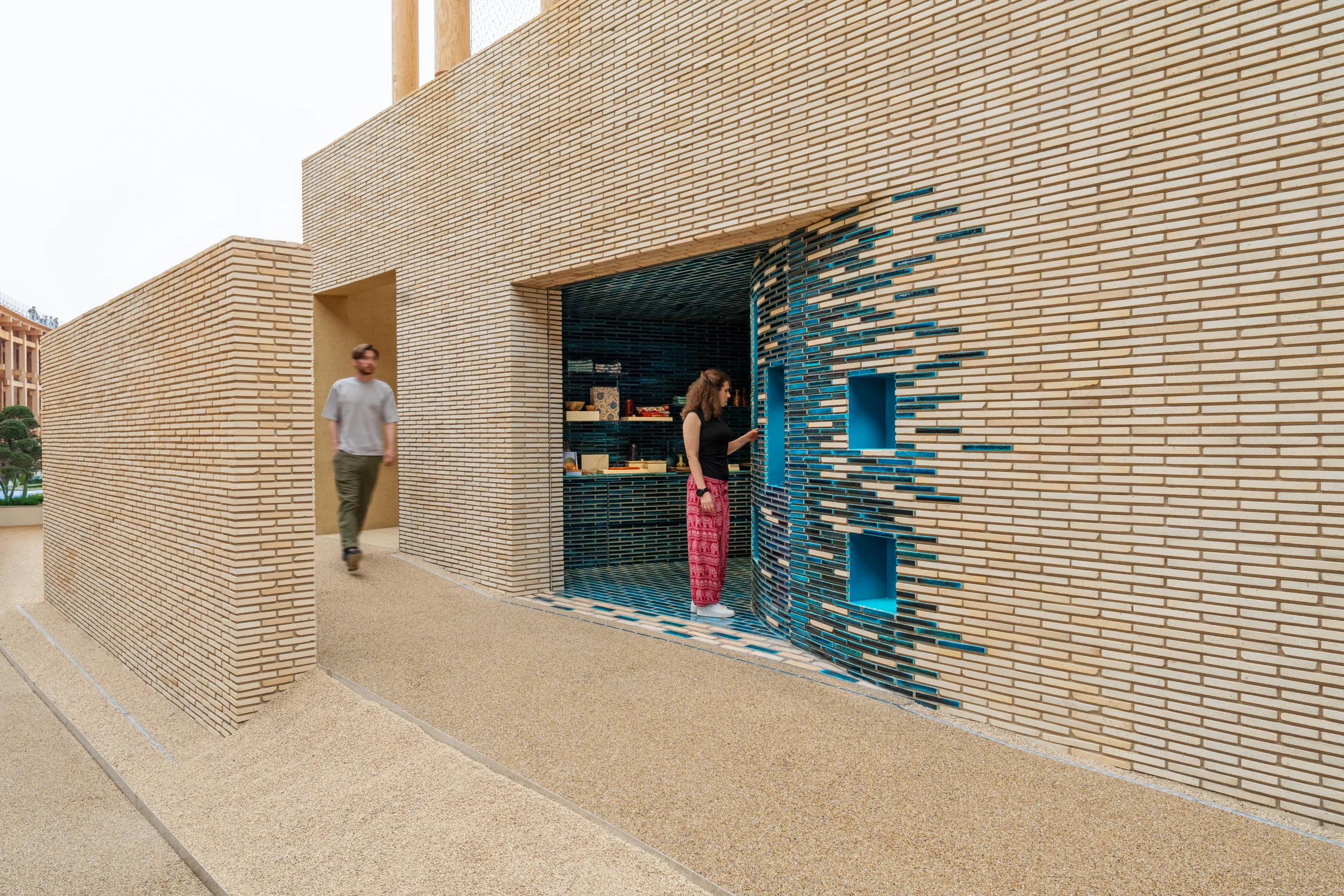
Inside, the pavilion unfolds like a story. The ground floor, named “The Soil,” anchors visitors in Uzbekistan’s transformation through the lens of education, sustainability, and innovation, focusing on SDGs 4, 7, and 9. From New Tashkent’s city-scale masterplanning to the revitalization efforts around the Aral Sea in partnership with Japan, the projects on display offer a glimpse into a rapidly changing landscape. Interactive exhibits blend the tactile with the digital: 3D models sprout from the ground, walls shift with animated projections, and Pepper’s Ghost illusions illuminate layers of history and possibility.
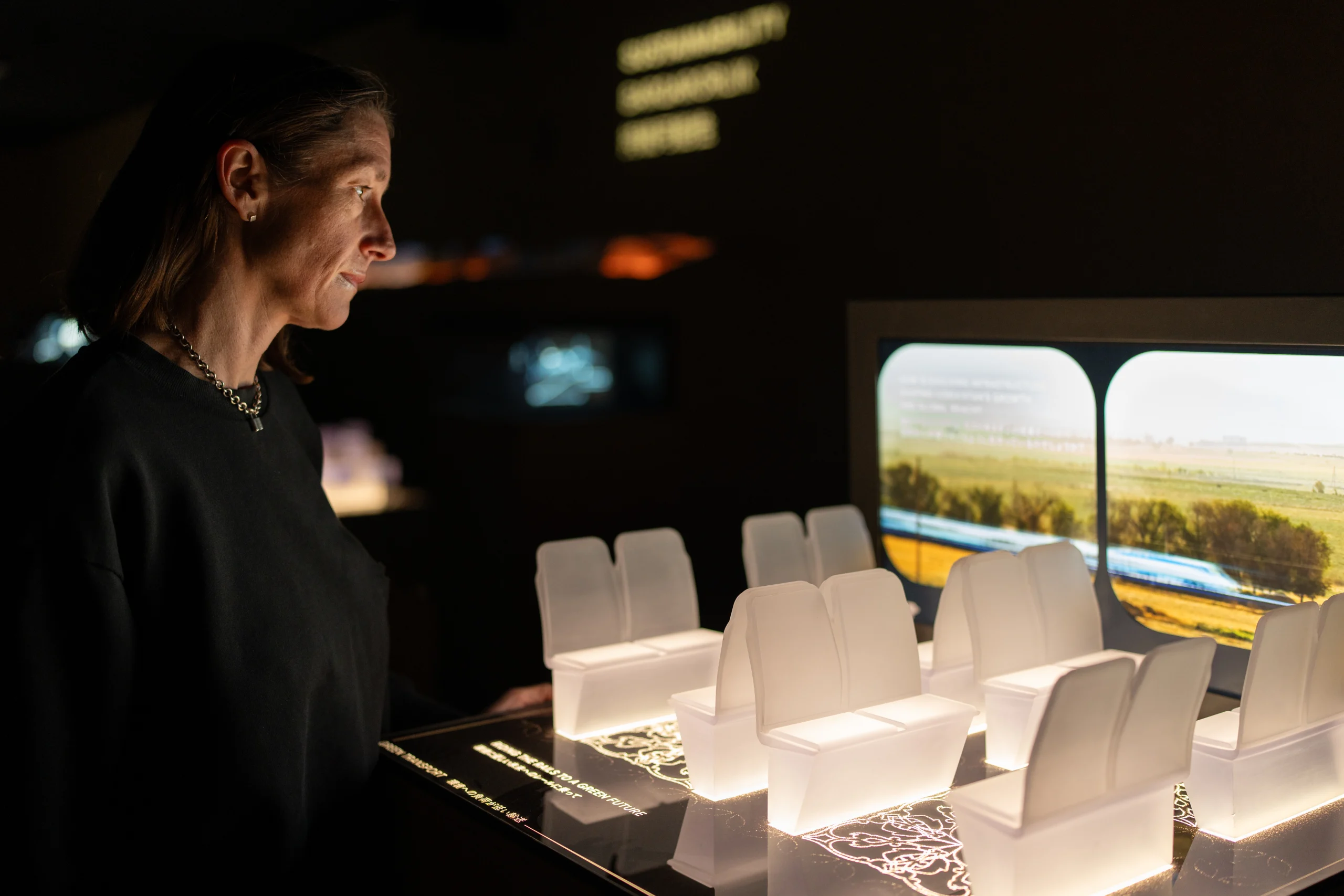
Traditional crafts meet contemporary education in another section of the exhibition, which features training programs for young artisans and restoration projects like the Bibi-Khanym Mosque, where cutting-edge technology is used to safeguard cultural heritage. Throughout, a layered visual language, based on Ganch carving and rendered in warm earth tones, ties the architecture to its narrative with elegance and clarity.
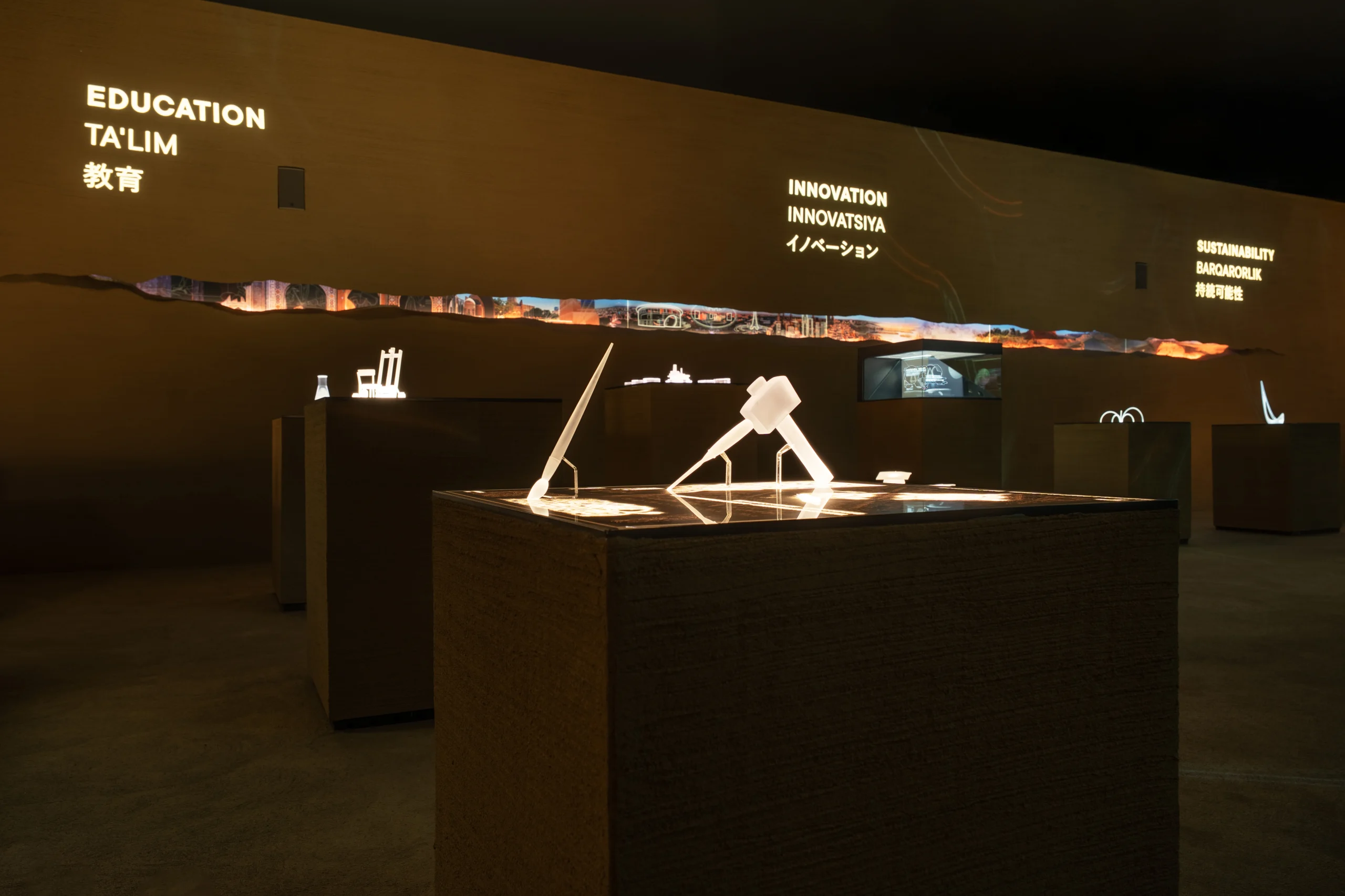
The experiential centerpiece of the pavilion is a rising platform surrounded by a 360-degree projection. Over the course of three minutes, visitors are transported from the roots of Uzbekistan’s heritage into a flowering vision of the future. The ascent begins in darkness, with glowing “seeds of knowledge” and soundscapes blending traditional melodies with futuristic rhythms. The journey ends in a view of a vibrant, interconnected Uzbekistan where pomegranate trees bloom alongside solar fields and bullet trains, an image of balance between culture and progress.
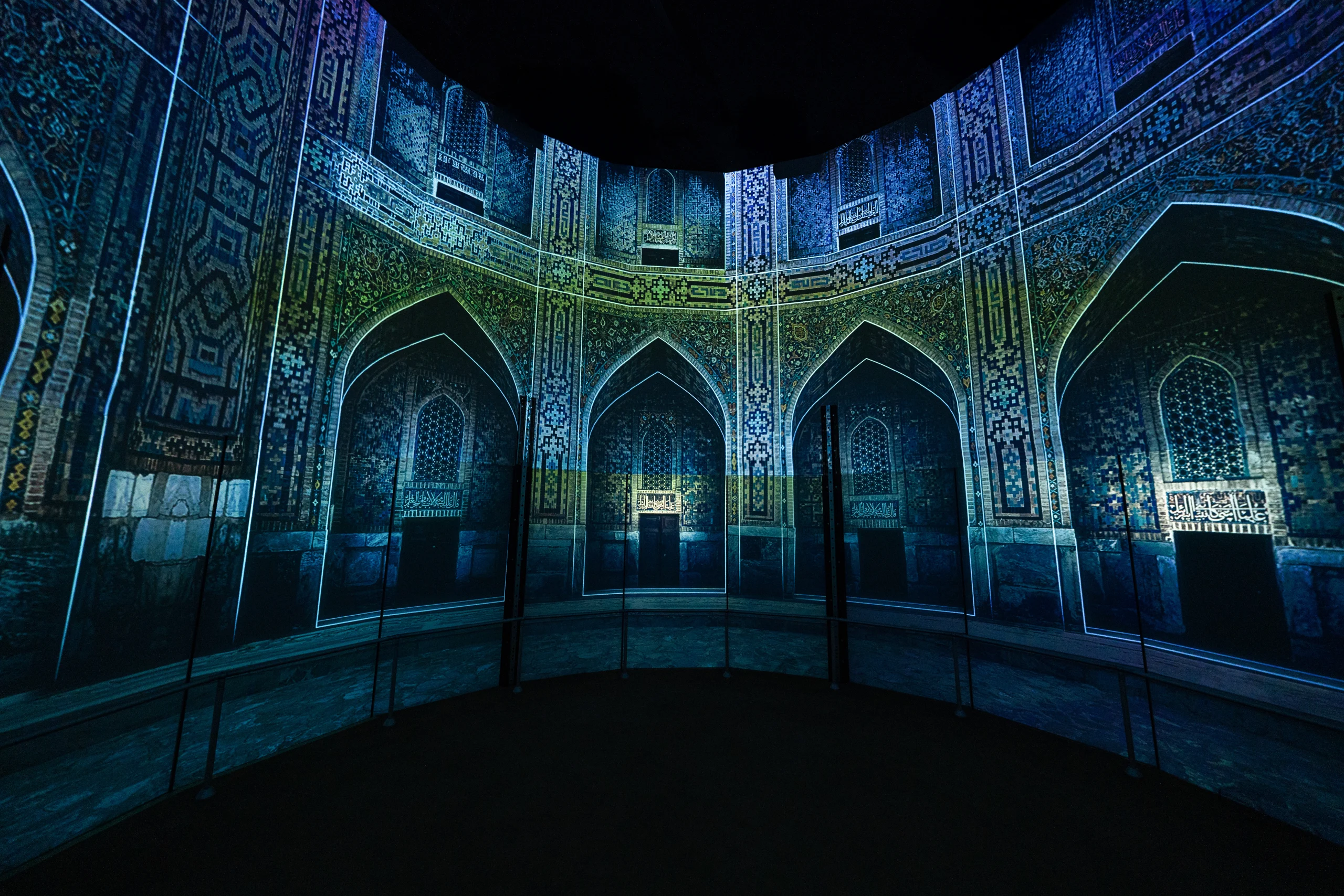
Images courtesy of ATELIER BRÜCKNER.




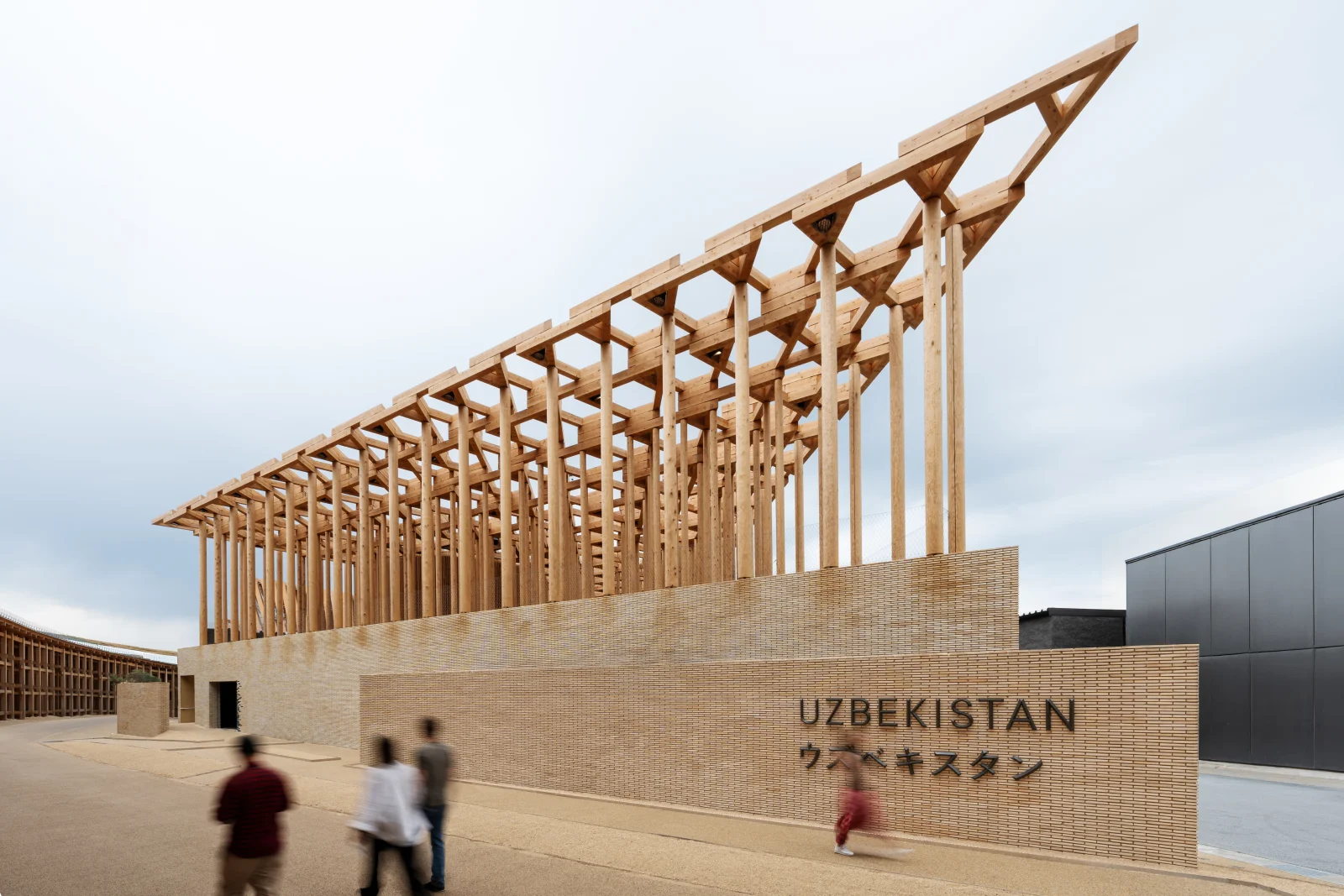












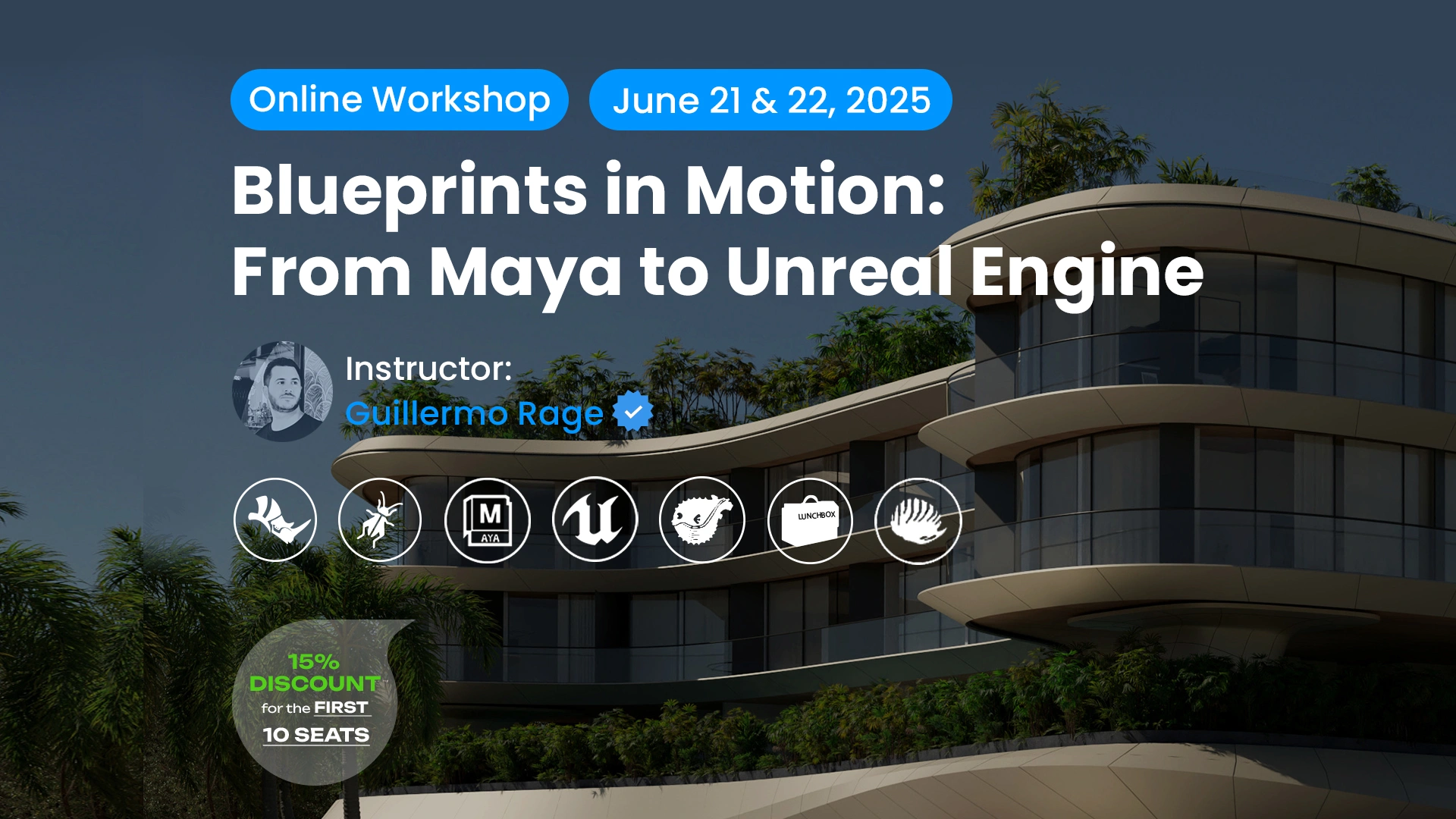
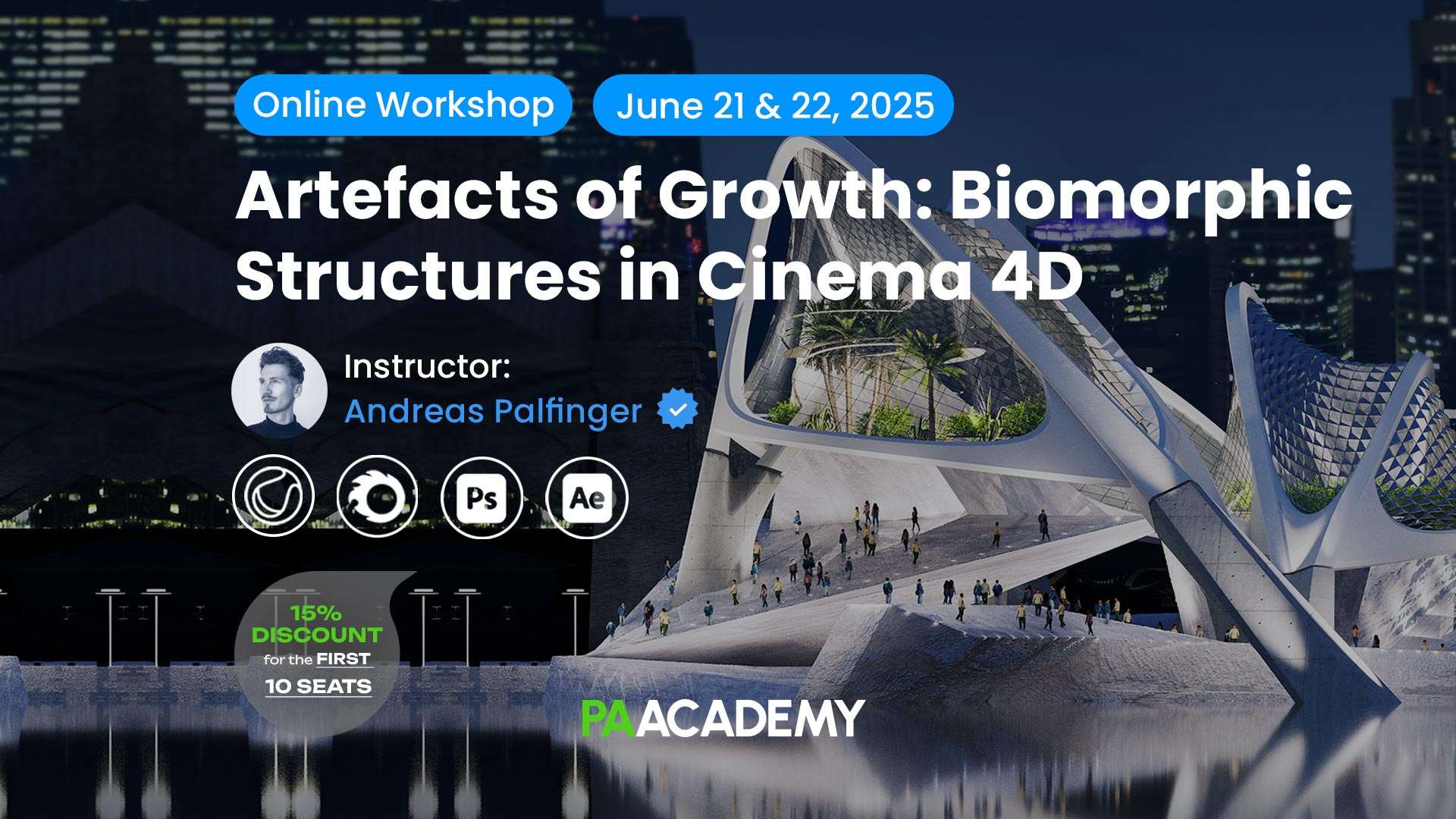











Leave a comment